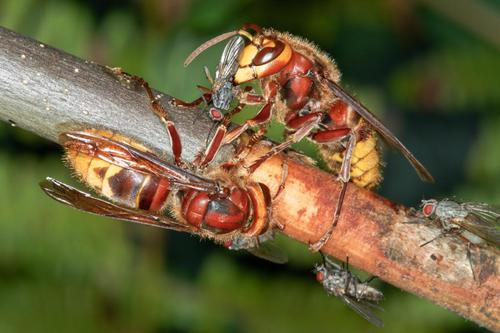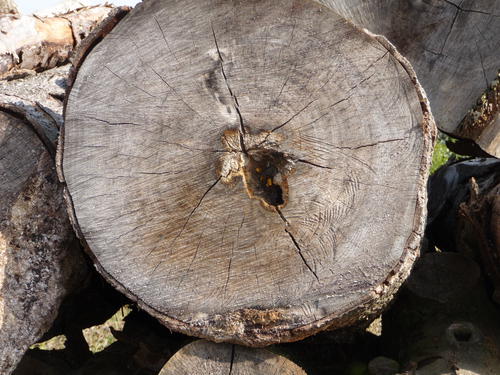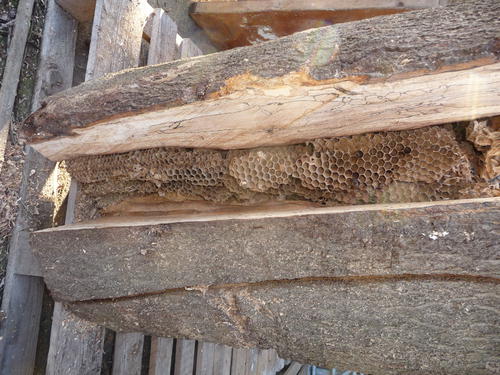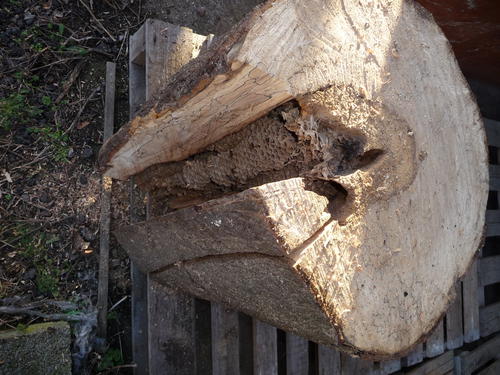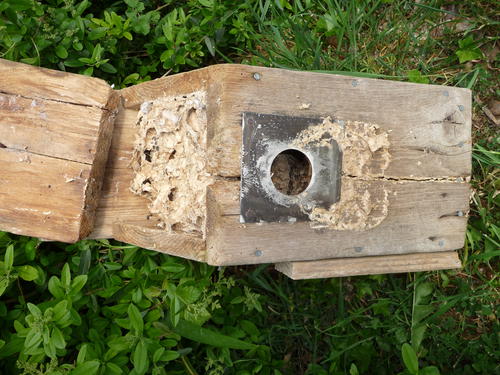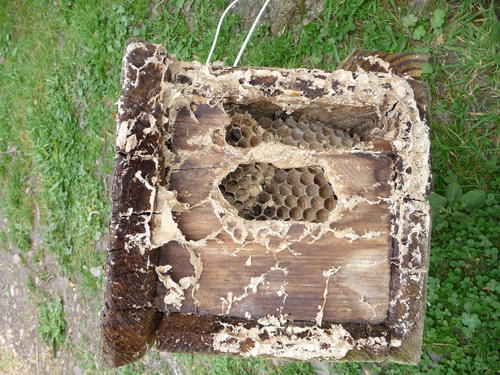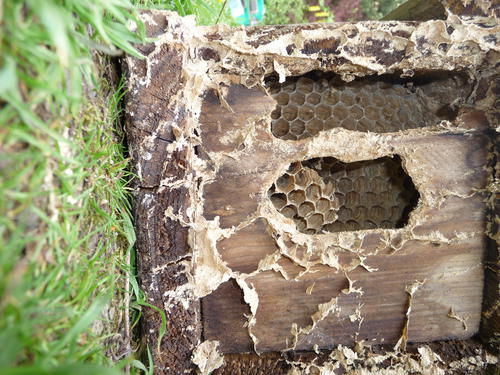Hornet stories: Hornets stripping bark and also catching fly; Hornet nest in cordwood near Tiddesley wood and in old nest box
Harry Green
(compiler)
In recent years the rapid spread of hornets throughout most for Worcestershire from western strongholds has given rise to a number of stories reported in previous issues of Worcestershire Record. Here are a couple more. The editor is always interested to receive more!
Hornets stripping bark and also catching fly
This picture (Fig. 1) was sent to Caroline Corsie at Worcestershire Wildlife Trust by Douglas Gregor. He wrote: in case it is of interest I attach a photograph of a couple of hornets stripping bark from an ash sapling in Monkwood at the end of October. Flies were beginning to irritate them and in this picture one of the hornets did take its vengeance! The question is, why were they stripping living bark? Perhaps to obtain sap which, once flowing, would probably attract flies. Many insects, including wasps and hornets, are attracted to sap runs on trees, especially as they develop the late-season sweet-tooth.
Hornet nest in cordwood near Tiddesley wood and in old nest box
Harry Green
Volunteers working at the old barns near Tiddesley Wood, Pershore, were fascinated watching many hornets flying in and out of a small hole is a large (about 2 metres long) piece of beech destined for firewood logs. When the time came for logging-up the contactor carefully cut open the log with a chain saw to reveal the carton nest build along a narrow tunnel over one metre long, here illustrated (Fig.2, Fig. 3 & Fig. 4). Irregularly constructed hornet nests are commonplace iin tree cavities while those hanging free in roof-spaces or the like are usually more or less globular in construction.
Hornets often take over nest boxes put up for birds. These are usually too small for purpose and hornet nest construction flows round the outside of the box. In 2010 hornets occupied an old nest box in Tiddesley Wood. The box is a bit larger than the usual tit box and was becoming rotten as the hornets chewed through the bottom and probably used the paper manufactured from that source to help construct their nest (Fig. 5, Fig. 6 & Fig. 7)
Images
Fig. 1. Hornets stripping bark on ash sapling and catching fly. Picture ©Douglas Gregor.
Fig. 2. Entrance to hornet’s nest in beech cordwood. Picture ©Harry Green.
Fig. 3. Hornet nest about one metre long in rotting beech log cavity. Picture ©Harry Green.
Fig. 4. Hornet nest about one metre long in rotting beech log cavity. Picture ©Harry Green.
Fig. 5. Hornet nest in nest-box. Those parts of the nest exposed to the weather on the outside of the box have disintegrated. Picture ©Harry Green.
Fig. 6. Hornet nest in nest-box. The hornets have chewed through the base of the box. Picture ©Harry Green.
Fig. 7. Hornet nest in nest-box. The hornets have chewed through the base of the box. Picture ©Harry Green.
